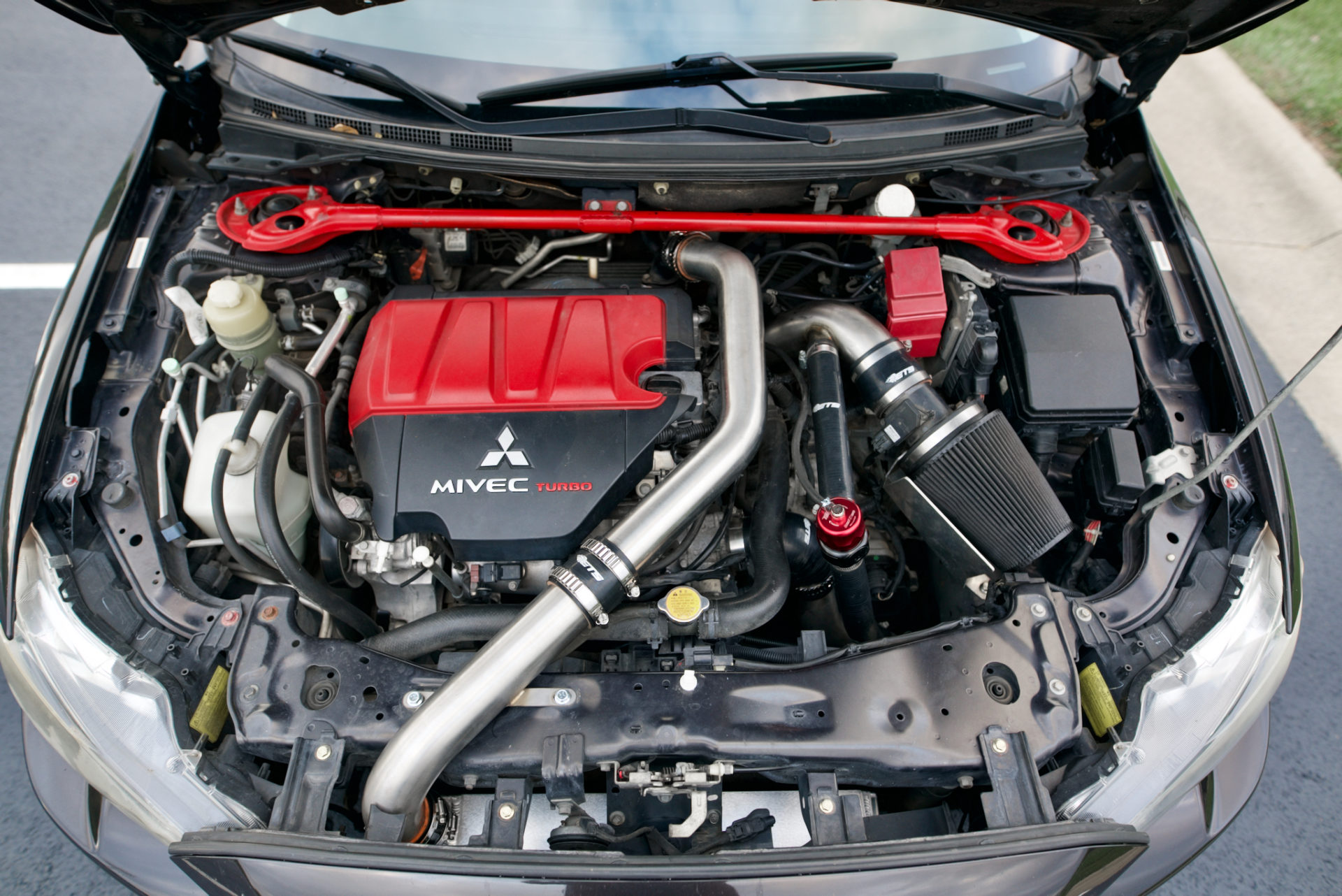The Solution!
I first started testing by increasing the seat pressure, but no luck, still the same surge. In the back of my mind, I’ve always thought that the least amount of spring seat pressure possible is best for driveability as inlet air could bypass the turbo when the intake manifold was under vacuum. As I was not patient enough to order a new, lighter spring, which is available from Turobsosmart directly, I started cutting down the existing spring and the more I cut, the more the surge was reduced. By the end of my cutting, I had just enough seat pressure to keep the piston in place, but the surge had completely disappeared and I could still hold full boost pressure no problem!

Why it works.
I honestly hadn’t expected this result so I chatted with MotoIQ’s resident turbo genius, Khiem Dinh, and he explained to me what was going on. The Turbosmart BOV/bypass valve has a really good seal design combined with using a larger surface area of the valve on the side with the vacuum nipple vs. the side exposed to the charge piping. This means, no matter what the boost level is, the BOV/bypass valve will stay closed, and the higher the boost pressure, the greater the valve will press against the seat. With this design, you only need just enough spring pressure to return the valve back into position at rest.
This also allows for reduced compressor surge because if there is any excess pressure in the charge piping, compared to the intake manifold, it can bleed off past the BOV/bypass valve as the seat pressure doesn’t need to be high anymore as there’s no internal bleed valve. The only potential downside is the mechanical safety net Mitsubishi designed is now gone, but this is true of any aftermarket BOV you go with and comes with the territory as we start modding cars in general.
With all this testing complete, I now have a very driveable Evo X with no flutter and am one step closer to daily driver perfection. Next up, baby steps towards going on track!
Sources
Professional Awesome Racing
Turbosmart





7 comments
I guess the trick is to have the tension enough to prevent the BOV from opening so you don’t mess up your MAF readings during high vacuum periods.
Because I am running recirc and the BOV lines are all post MAF, I think it’s why my setup works well. I never have unmetered air and it’s open in most low load situations. At least that’s my working theory.
Makes sense.
Cutting a spring makes it stiffer so you probably increased the holding pressure of the BOV not reduced it
Cutting off coils does increase the spring rate, but the spring was (and still is to a much lesser degree) compressed by the cap, so seat pressure is reduced greatly.
Hello Daniel.
Would you mind sharing wich scan tool specifically and wich key fob you purchased.
I bought an MR last year and only have 1 smart key with it.. paranoia of loosing it is a lot.
Thanks man.
No problem!
This is the scan tool I used: https://www.amazon.com/gp/product/B07N69PC3D/ref=ppx_yo_dt_b_search_asin_title?ie=UTF8&psc=1
This is the fob:
https://www.amazon.com/gp/product/B07MQ1CDSV/ref=ppx_yo_dt_b_search_asin_title?ie=UTF8&psc=1
or these:
https://www.amazon.com/gp/product/B07GQ11WGG/ref=ppx_yo_dt_b_search_asin_title?ie=UTF8&psc=1
That being said, I could only get 1 fob and the valet key to program correctly at the same time. Every time I tried to do 2 fobs it wouldn’t work.